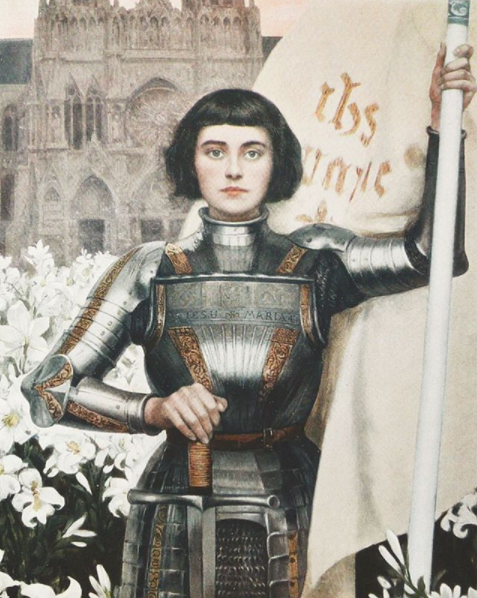6 Surprising Facts About the Joan of Arc
Source: www.instagram.com/regiumethistoria
Joan of Arc (Jeanne d’Arc in modern French, Jehanne D’arc in medieval French) was a peasant girl living in medieval France. Though she was dead by the age 19 in the early 15th century, she made her imprint on history forever. In an era when women were considered to be second-class citizens, Joan led an army and inspired an entire country with her valor and fierce passion. She believed that God had chosen her to lead France to victory in its long-standing war with England.

Joan of Arc’s true legacy was decided 22 years after her death as stories about her turned into legends. She was officially canonized in 1920 as the Maid of Orléans, and is considered to be one of history’s greatest saints, as well as an enduring symbol of French unity and nationalism.
People all over the world know who about the Joan of Arc, but not many are aware of some of the intricacies of her story. Here are six surprising facts about the Joan of Arc that you probably never knew:
1. Jehanne d’Arc was her real name not Joan of Arc
Though she was popularly known by the moniker Joan of Arc, she was not from Arc but instead grew up in Domrémy, a village in northeastern France. During the trial, she referred to herself only as “Jehanne la Pucelle” which means “Joan the Maid”. The confusion about her name evolved from her father’s surname, d’Arc, and this led to the birth of the misnomer Joan of Arc.
2. She never engaged in active combat herself
Joan is remembered as a fearless warrior till date and considered the heroine of the war between France and England; however, she never actually actively participated in battle or killed any enemy combatant. She was responsible for devising strategies, commanding troops and proposing diplomatic solutions. She would often accompany her troops as an inspirational mascot and brandish her banner instead of a weapon.
3. As per Doctors in modern times, she might have suffered from mental disorders like epilepsy and schizophrenia
As famously known to have started hearing voices and visions around the age of 12-13 which she believed were the signs from God, she might have suffered from mental disorders. During the trial, she said that a bright light would appear whenever she heard voices and it would get clearer whenever bells were ringing in the background. All these are common symptoms of schizophrenia.
4. She wasn’t burned at the stake for witchcraft
Contrary to popular belief, she was not burnt for witchcraft. After being captured by the enemy in 1430, she was tried by an ecclesiastical court. There were 70 charges against her including sorcery, horse theft and many others, but by May 1431 the charges were reduced to 12 which were related only to her wearing of men’s clothing and her claims about having a direct contact with God. She was illiterate, and her enemies took advantage of this by making her sign a confession where she vowed not to repeat her ‘sins’. As a result, she was ultimately considered a ‘relapsed heretic’ and sent to the stake.
5. She was an ill-tempered, hot-headed woman
She was known to have lost her temper often with the men in the army and brusquely reprimanded those who swore, skipped mass and behaved badly. She is also believed to have scared off the mistresses and prostitutes who traveled with her army men with with a sword and even physical attacks!
6. The Bobcut was inspired by the Joan of Arc’s haircut, in 1909
The Joan of Arc claimed that the voices that ordered her to wear men’s clothing also told her to cop off her long hair to look like a man. Monsieur Antoine, who was a Polish-born hairdresser in 1909, started cutting his fashionable clients’ hairs in a short “bob,” and cited the Joan of Arc as his inspiration. The “bobcut” became intensely popular in the 1920’s, mainly because of the stars of silent films, who often sported the haircut on screen.




